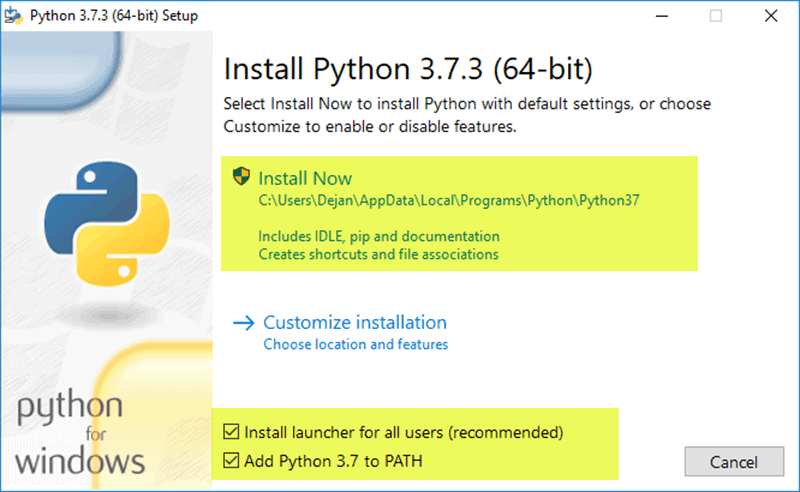

- Python 3 install simulatedv how to#
- Python 3 install simulatedv software#
- Python 3 install simulatedv download#
Where my_protocol.py is replaced with the path to your protocol file. If your protocol is saved to a file (as opposed to a cell in a Jupyter Notebook), open a command line, and run: opentrons_simulate my_protocol.pyįor Windows opentrons_simulate.exe my_protocol.py

Once you have the Opentrons Python module installed, you're ready to simulate protocols. If you installed Python directly, in your terminal, run: pip install -upgrade opentrons Note that this will take a long time with no output but it is working. Like when you first installed the module. Open a Python Jupyter Notebook and run: In : import sys To do this, you'll use Python's built in package manager, pip. Now that Python is installed, you can install our Python module. If you are on Windows and installing Python standalone from, please make sure you select the option in the installer that says "Add Python 3.7 to PATH" (if you're installing Anaconda, you don't have to do this):
Python 3 install simulatedv download#
Regardless of how you decided to install Python, you may want to also download a text editor to write your protocols in, like Sublime Text or Atom. If you don't want to install Anaconda and Jupyter, you can install Python standalone for Windows, Mac, or Linux from Installing Python from these links will give you the language and its shell, but nothing else. You must download and install the Python 3.7 version of Anaconda, not the Python 2.7 version. To start with Jupyter and Anaconda, follow the Jupyter setup instructions. It is available for Windows, Mac, and Linux. If you do need to install Python, you can download Anaconda, a Python distribution aimed at scientists that has sophisticated editors like Jupyter. Note: If Python is already installed, depending on how it is configured on your computer, you may need to slightly modify the commands below, e.g. It is recommended to use a version between 3.7.0 and 3.9.9. Update: Python 3.10 currently does not allow for protocol simulation. These will work fine, as long as they are version 3.7 or higher. The first step is to install Python 3.7 or higher on your computer. You may already have Python installed, either directly or because you're using Anaconda or another scientific Python distribution. Get Ready: Install Python and the Opentrons Module
Python 3 install simulatedv how to#
For instructions on how to update the simulator, please see the Updating the Opentrons Module section below. Updating the app on your computer does not update the simulator.
Python 3 install simulatedv software#
Please note that whenever Opentrons releases a new version of its robot software and desktop app, we also release a new version of the protocol simulator. However, you may want to simulate protocols on your computer, without having to be connected to a robot at all. The Opentrons App and the OT-2 work together to simulate your protocols when you upload them, and show you errors right in the app.


 0 kommentar(er)
0 kommentar(er)
